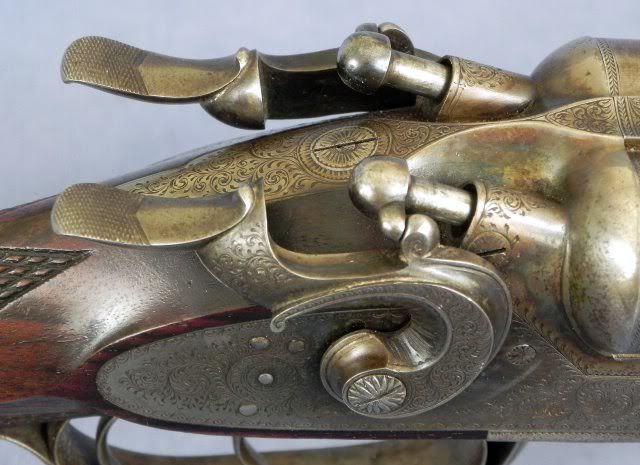The gun was made around 1870 or perhaps several years earlier before Stanton's 1867 patent of a rebounding hammer. At that time one of the main difficulties was getting the firing pin to retract before opening. Sometimes they would become stuck in the primer, other times they protruded enough through the breech face to prevent the gun opening and could easily be broken as it was opened. For a time even after the rebounding lock was invented there seems to have been a distrust of spring loaded firing pins (strikers) doing their job of retraction. And some felt spring loaded strikers softened the blow necessary to reliably ignite a primer. So, numerous ideas were tried to mechanically force the strikers back. Your subject gun is a good example and worked well enough though rather ungainly in appearance. I have an early Greener that has a teat on the hammer's breast (no wisecracks here) that engages the firing pin and retracts it upon being put in half cock position. Same principle.
Footnote: the concept of mechanical retraction seems to have it origin with a patent by Gastinne of Paris in 1862. Various similar English patents were issued in the years following. Lancaster's in 1865 (most similar to your subject gun) and Greener's in 1868, among several others.
The James Beattie & Son:

The W. W. Greener:
